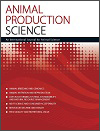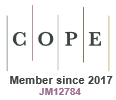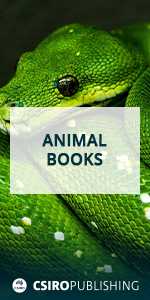Phosphorus in poultry diets is mainly in the form of phytate, which may remain unused. The addition of high concentrations of phytase can reduce the use of inorganic phosphorus resources, and thus lower the production costs. The present study found that the dietary inclusion of higher concentrations of phytase could improve the performance of broiler chickens.

Animal Production Science
Volume 65 Number 6 2025
Severe weather events associated with climate change have several negative impacts on livestock, but livestock do contribute significantly to greenhouse gas emissions. Most climate-smart approaches to mitigate greenhouse gas emissions are inappropriate for low-and middle-income countries where food insecurity and the need to adapt livestock systems to a changing climate are greatest. This paper gives an discusses climate-smart approaches for enhancing livestock Productivity to simultaneously reduce greenhouse gas emissions, increase livestock adaptation to climate change and improve food security in low- and middle-income countries.
This article belongs to the collection: Sustainable Animal Agriculture for Developing Countries 2023.
AN24215 Abstract | AN24215 Full Text | AN24215PDF (2.3 MB) Open Access Article
Cattle exhibit significant variation in growth performance, enabling the selection of superior animals. Efficient nitrogen use in cattle, which can be predicted through nitrogen isotopes in tail hair, correlates with improved growth performance. This study highlights how steers with better nitrogen use efficiency respond positively to a urea supplemented diet, demonstrating enhanced growth on low-quality feed. Identifying such cattle allows for more effective and economical feed and supplement strategies.
AN24210 Abstract | AN24210 Full Text | AN24210PDF (576 KB) Open Access Article
The use of dietary garlic to enhance ruminant productivity has gained attention in the animal production industry due to its several pharmacological properties. However, there are inconsistent results on the effects of dietary garlic on ruminant productivity. This meta-analysis demonstrated the efficacy of dietary garlic intervention in enhancing small ruminant productivity while reducing methane emissions.
The efficacy of plant bioactives in supporting health and productivity of lactating cows and growing ruminants under heat stress remains underexplored. This review provides an overview of existing studies to address this gap. Heat-stressed animals may experience reduced feed intake, compromised immunity, oxidative stress, and productivity losses. Some phytogenics have shown promise in mitigating these effects, especially in lactating cows. However, further research, particularly in pre-weaning calves and under different heat stress severity and durations is needed to validate these findings.
AN23386 Abstract | AN23386 Full Text | AN23386PDF (612 KB) | AN23386Supplementary Material (404 KB) Open Access Article
An adequate understanding of how the energy required to maintain a growing animal changes with body mass is critical to development of efficient animal production systems. Previously we reported that a cubic relationship existed between these variables; therefore, we aimed to determine whether causal factors could be identified that explained this finding. Protein turnover, fat turnover, and rate of growth explained the cubic relationship between maintenance costs and body mass, and identified the energetically optimal mass of a growing animal.
GreenFeed units are widely used globally to measure methane emissions. In grazing systems, cattle may decrease their visitation frequency to these units, leading to an increased number of measurement days or animals required to precisely determine greenhouse gas emissions. In total, 12–18 measurement days and 9–19 animals are required to estimate methane emissions in grazing cows and heifers.
This article belongs to the collection: Australasian Dairy Science Symposium 2024.
AN24280 Abstract | AN24280 Full Text | AN24280PDF (1.6 MB) | AN24280Supplementary Material (441 KB) Open Access Article
Melatonin implants have been used to improve the survival and growth of lambs, and the improvement of colostrum and milk quality. In this study, we have demonstrated that implanting ewes 30 days before lambing increased growth rates of lambs, particularly in males. Moreover, implanting lambs at 45 days of age produced the highest growth and feed conversion rates in the fattening period. Melatonin treatments pregnant ewes and lambs at weaning are promising methods for increasing productivity of lamb meat production.




